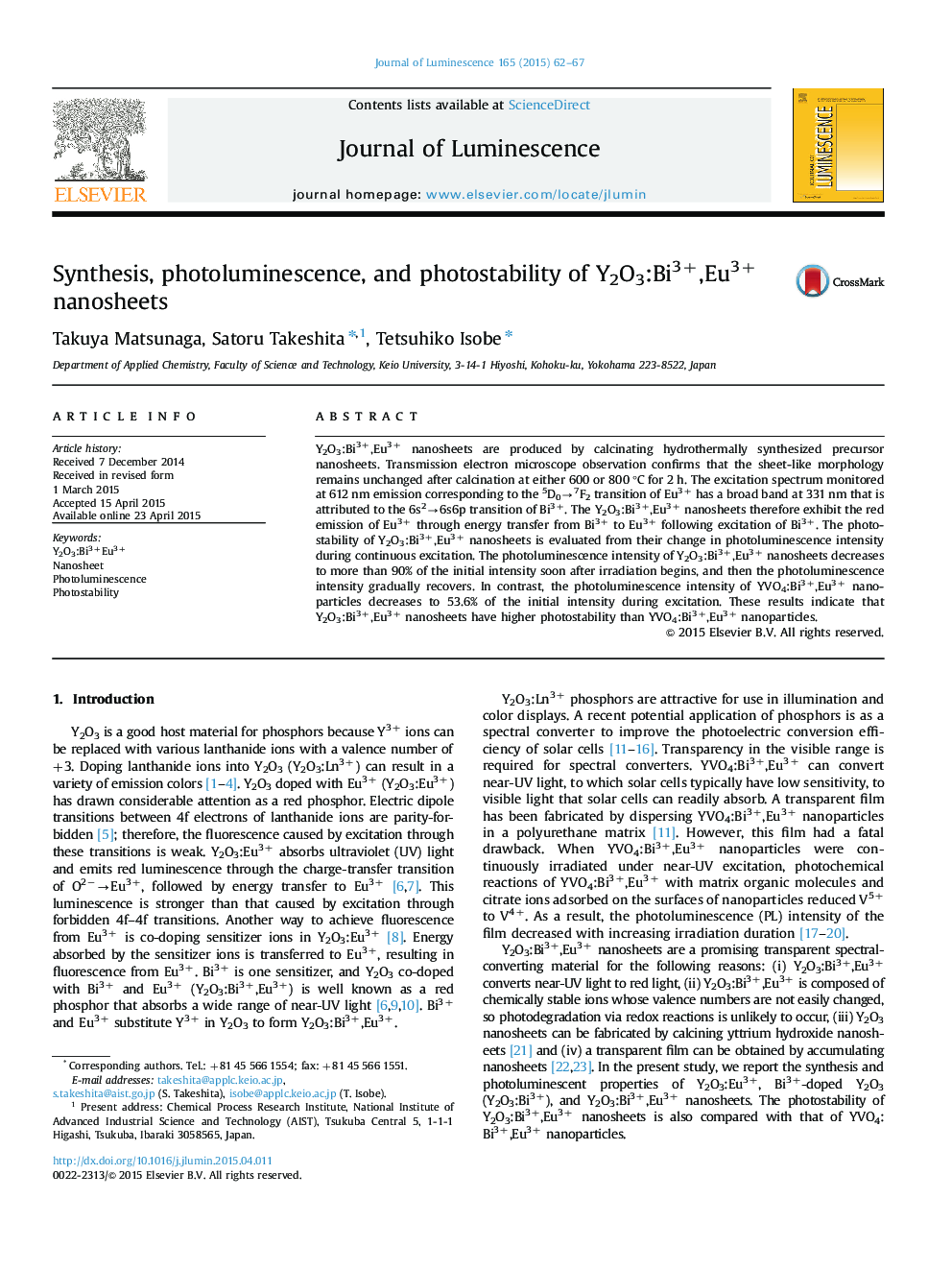| Article ID | Journal | Published Year | Pages | File Type |
|---|---|---|---|---|
| 5398853 | Journal of Luminescence | 2015 | 6 Pages |
Abstract
Y2O3:Bi3+,Eu3+ nanosheets are produced by calcinating hydrothermally synthesized precursor nanosheets. Transmission electron microscope observation confirms that the sheet-like morphology remains unchanged after calcination at either 600 or 800 °C for 2 h. The excitation spectrum monitored at 612 nm emission corresponding to the 5D0â7F2 transition of Eu3+ has a broad band at 331 nm that is attributed to the 6s2â6s6p transition of Bi3+. The Y2O3:Bi3+,Eu3+ nanosheets therefore exhibit the red emission of Eu3+ through energy transfer from Bi3+ to Eu3+ following excitation of Bi3+. The photostability of Y2O3:Bi3+,Eu3+ nanosheets is evaluated from their change in photoluminescence intensity during continuous excitation. The photoluminescence intensity of Y2O3:Bi3+,Eu3+ nanosheets decreases to more than 90% of the initial intensity soon after irradiation begins, and then the photoluminescence intensity gradually recovers. In contrast, the photoluminescence intensity of YVO4:Bi3+,Eu3+ nanoparticles decreases to 53.6% of the initial intensity during excitation. These results indicate that Y2O3:Bi3+,Eu3+ nanosheets have higher photostability than YVO4:Bi3+,Eu3+ nanoparticles.
Related Topics
Physical Sciences and Engineering
Chemistry
Physical and Theoretical Chemistry
Authors
Takuya Matsunaga, Satoru Takeshita, Tetsuhiko Isobe,
